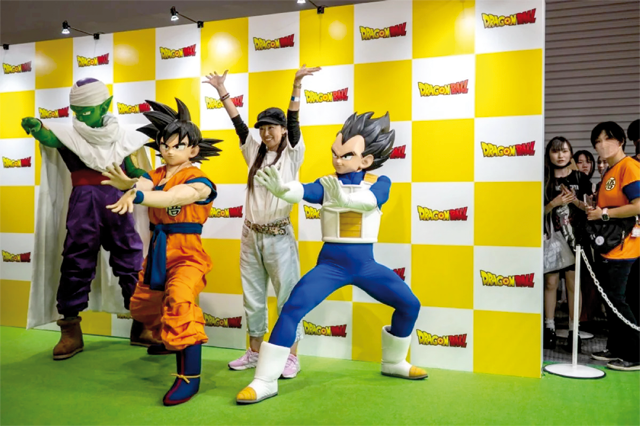You are here
Dragon Ball: Japanese manga that transcended borders
By AFP - Mar 10,2024 - Last updated at Mar 10,2024
TOKYO — Beloved for its genre-defining artwork, universal enjoyability and stateless characters, Akira Toriyama’s “Dragon Ball” set the standard for Japan’s globally renowned manga graphic novel industry.
The shock death of its creator, aged 68, prompted an outpouring of disbelief from fans across the world on Friday who mourned the mangaka extraordinaire in all different languages.
According to social media monitoring firm Visibrain, 2.5 million messages paying tribute to his demise were posted on X, formerly Twitter, in just six hours, or 267 postings per second.
First serialised in 1984, “Dragon Ball” is one of the best-selling manga franchises of all time and has spawned countless anime series, films and video games.
It features a boy named Son Goku who collects magical balls containing dragons to help him and his allies in a fight to protect the Earth from evil enemies.
Part comedy, part absurdist adventure, the series fused martial arts action with a story influenced by the classic Chinese tale “Journey to the West”.
It is deemed a paragon of the “shonen [boys]” genre that has over the years defined Japan’s manga and anime industry and helped propel it into global popularity.
Although other shonen blockbusters like “One Piece” and “Naruto” are similarly awash with adrenaline-inducing battles and swashbuckling heroes, “Dragon Ball” cemented its position as the genre standard, experts say.
“’Naruto’ and ‘One Piece’ are also popular overseas, but ‘Dragon Ball’ stands out in terms of the number of countries that have aired the animation,” Kazuma Yoshimura, a manga studies professor at Kyoto Seika University, told AFP.
The comics have sold more than 260 million copies in Japan and worldwide, according to publisher Shueisha.
What also set “Dragon Ball” apart is Toriyama’s meticulously detailed art, Yoshimura said.
“He’s someone who did the job of mangaka, illustrator and graphic designer,” the professor said, citing characters and landscapes so richly depicted that they easily survived transformations into 3D mediums like toy figurines.
“Readers cannot simply take their eyes off,” Yoshimura said of the mangaka’s art.
“I think he was indeed a rare talent.”
‘Transcending borders’
Dubbed in different languages, the show over the years became a global sensation, capturing children’s hearts with its madcap battles won by the small hero as his power grows.
Encapsulated in the juggernaut is “the culmination of what entertainment should be like”, anime specialist journalist Tadashi Sudo told AFP.
“Toriyama knew exactly what everybody wants to read — adventure and the growth of characters,” he said.
Aside from painstaking art, part of its appeal for a global audience, he said, likely stemmed from the “statelessness” of characters that struck a perfect balance between exoticness and relatability.
“It’s not like the series was obviously set in one particular region of the earth, such as Japan or the United States,” Sudo said.
But with a whiff of Asian-ness derived from the “Journey to the West” and pop Western styles, the show can at the same time feel familiar to a broad audience, the expert said.
“So in a sense, the series was a melting point of cultures, and I think that’s one of the reasons why it’s loved so widely around the world.”
Fans paid tribute with art posted under the statement on X, including of Son Goku ascending to the sky with angel wings and a halo.
“Thank you for making my childhood awesome,” one wrote.
And this cross-border fandom held true of other works of Toriyama, including “Dr. Slump” and “Sand Land”, publisher Shueisha says.
“His manga have been read and loved all over the world, transcending borders,” it said.
Related Articles
TOKYO — Fans of the “Dragon Ball” franchise are set to see a host of product launches in the coming weeks, including a new video game and an
TOKYO — He is the creator of one of the world’s best-known manga, but “One Piece” author Eiichiro Oda shuns stardom with a carefree attitude
WASHINGTON — A skull preserved almost perfectly for more than 140,000 years in northeastern China represents a new species of ancient people

















